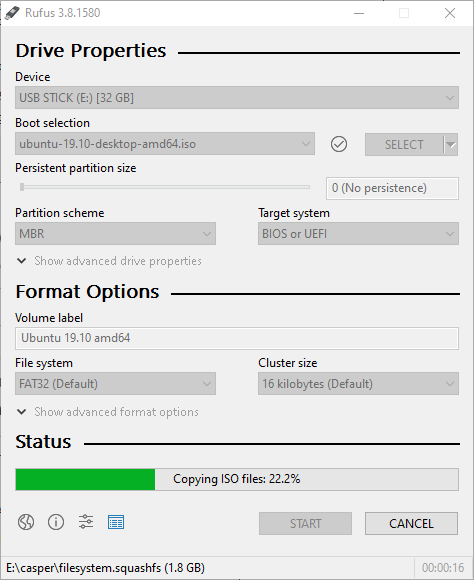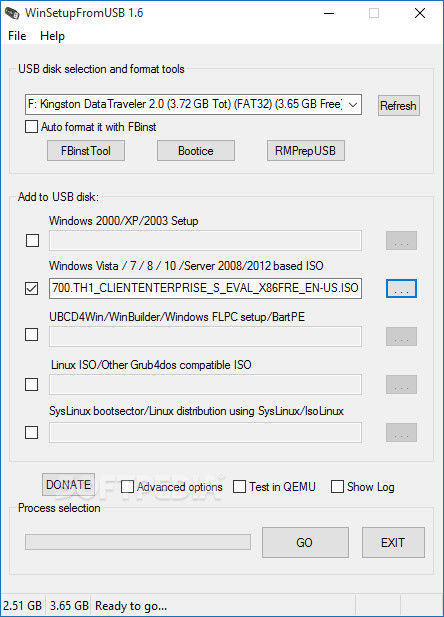
#Rufus linux how to#
Related: How To Make a Bootable Windows 10 USB On Linux Using WoeUSB. But it doesn't support every Linux distribution out there.

With the latest Rufus 3.7 beta though, the persistent partition feature works (I tested it with the latest daily build of Ubuntu 19.10 Eoan Ermine). This application is able to create persistent live drives that work in both UEFI (MBR or GPT) and BIOS mode, with casper-rw being used for the persistent storage partition, so it can have a size of more than 4GB.Įxperimental persistent partitions support was first added to this Windows bootable Live USB creation tool with version 3.6, but it didn't seem to work properly, as in my test, any changes made to the Live USB did not persist between reboots.

#Rufus linux iso#
It can be used to create not only bootable Windows drives from ISO files or disk images, but also create bootable Linux USB drives from Windows. Rufus is a popular free and open source graphical tool to create bootable USB drives from Windows. The last thing: press "Start" button.Starting with Rufus version 3.7, the application has finalized the persistent partition support for Debian and Ubuntu, allowing users to create persistent storage live USBs of recent Debian Live ISOs, and Ubuntu Live ISOs created after 1st of August, 2019. Make sure you have already have backups, and answer Yes. Rufus will remind you that it will delete all files inside the USB drive while performing image writing. It means the iso file you use is a hybrid iso.ġ1. If Rufus asks about choosing between ISO mode and DD mode, choose ISO mode.
#Rufus linux download#
If Rufus asks about downloading syslinux, answer Yes and let it download (fire up your internet connection).ġ0.

Select Create bootable disk using: > click disk icon > choose the iso image file > OK.ĩ. Select Partition Scheme: MBR partition scheme for BIOS and UEFI.Ĩ. For example, my drive address is /dev/sdc1.ĭon't make mistake here otherwise you may mess your main partition.ħ. To know the correct drive address: open Terminal > type lsblk -o NAME,LABEL > see the line indicating your USB drive. Select Drive: /dev/sdXY where X is your USB drive letter name and Y is its number. If you have no idea where it is, navigate to Computer first then to / and then to /home.Ħ. This including download or obtain it from somewhere. Both UNetbootin and Rufus are free software, licensed under GNU GPL.ġ.
#Rufus linux install#

It is not limited to Ubuntu, using UNetbootin/Rufus you can create bootable drive for another GNU/Linux distribution such as Fedora, openSUSE, Slackware, Linux Mint, or anything else with this tutorial. By using this article you can, for example, create Ubuntu bootable USB drive. A GNU/Linux bootable drive is just like a DVD to boot and install Windows in your computer, except it is used to install GNU/Linux system. This tutorial explains steps about creating bootable USB drive of GNU/Linux distribution with UNetbootin or Rufus program.


 0 kommentar(er)
0 kommentar(er)
